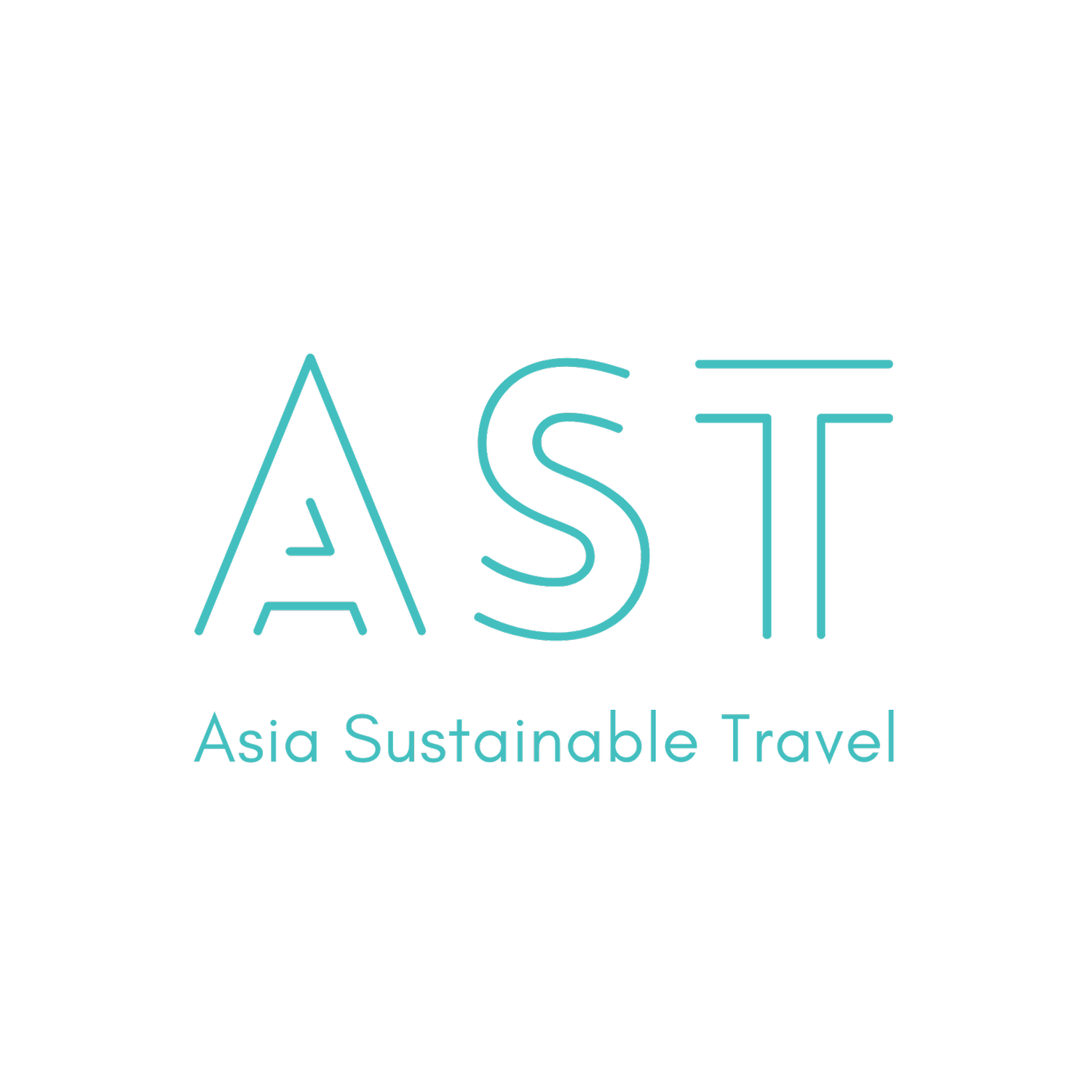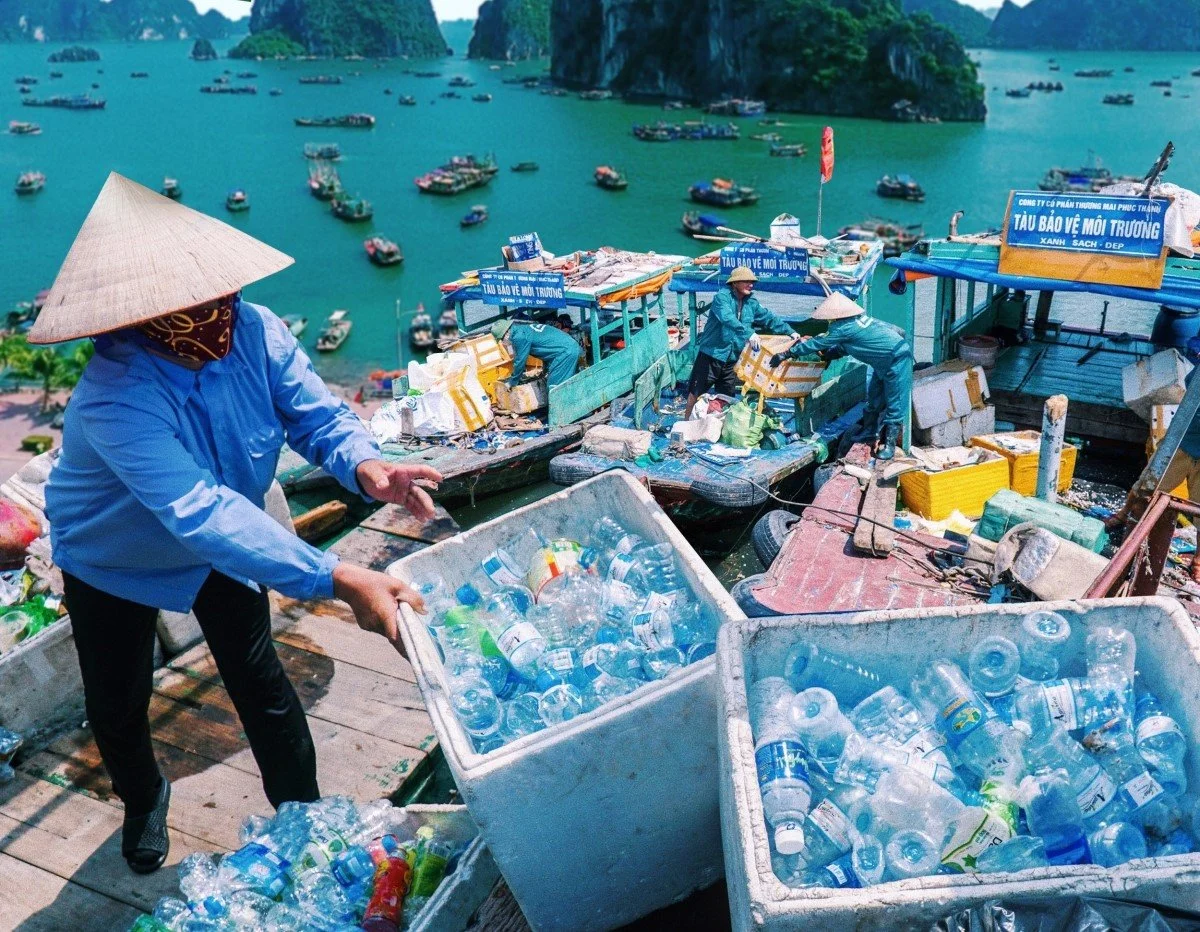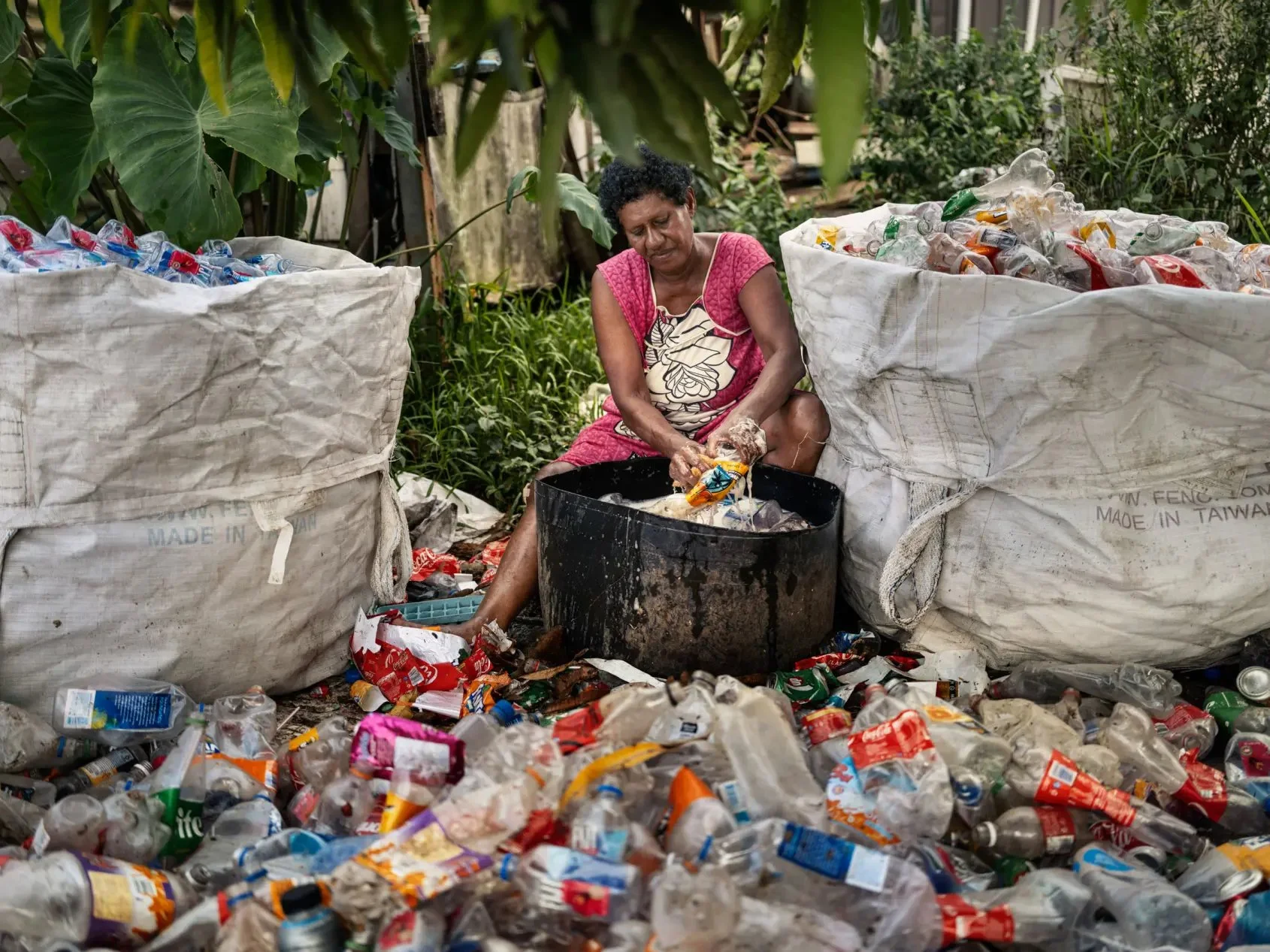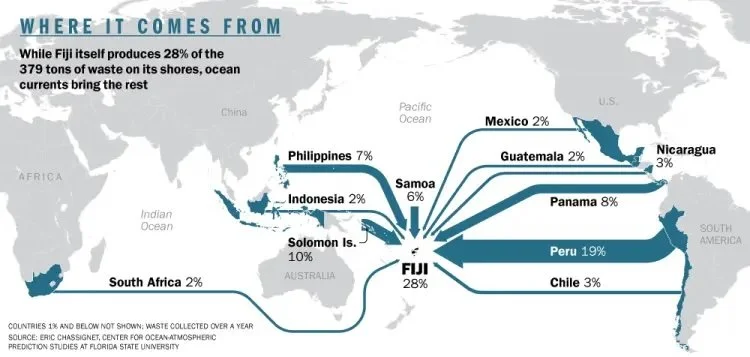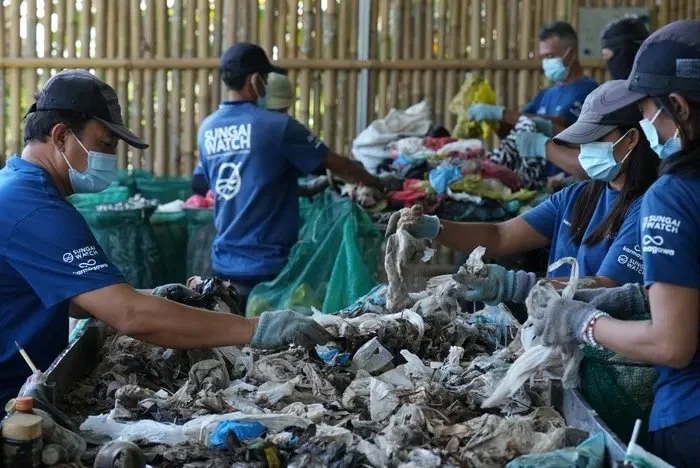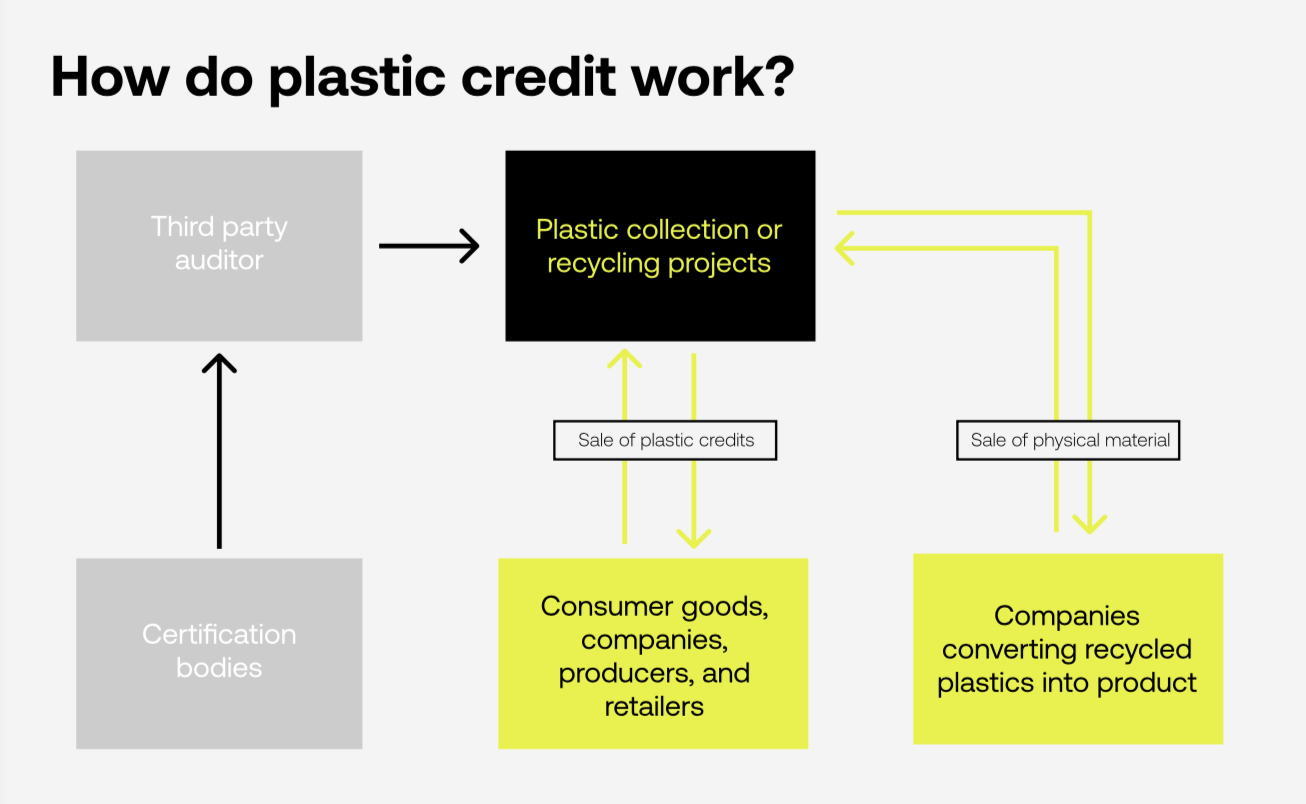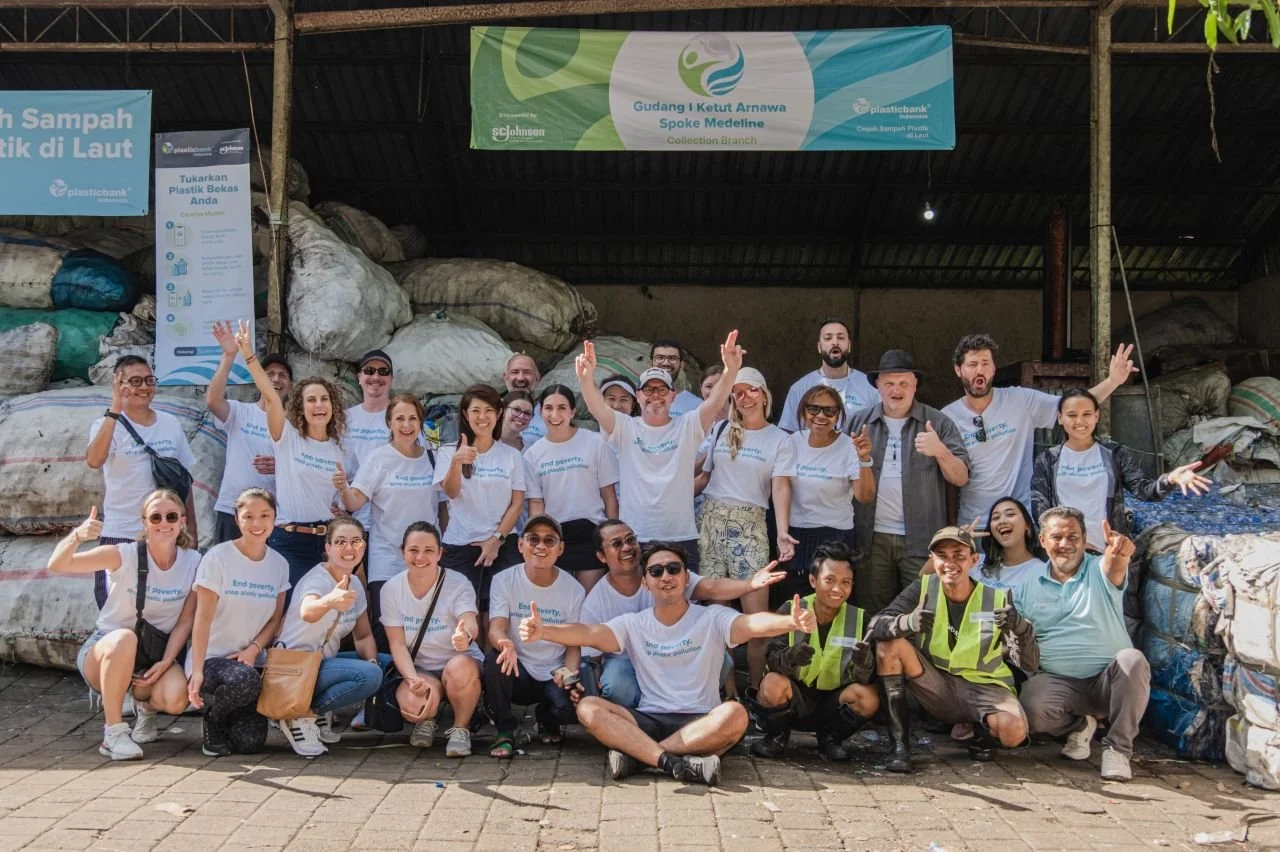Solution to Plastic Pollution: Make Plastics Obsolete
Photo by: Sealife Group
Is it 1,000 tons of plastic in the Great Pacific Garbage Patch or 2,000 tons? Does it matter anymore at this point? Plastics and microplastics permeate every aspect of all life on earth.
Some may ask: what’s the harm of plastics anyway? Are we living with them already?
This issue is not just about unsightly litter; it's a major contributor to the broader climate and health crises that we all face.
Plastic Pollution: A Polycrisis
Plastic pollution is closely linked to climate change. Plastic production, breakdown, and disposal all contribute to greenhouse gas emissions and environmental harm.
Source: Our World in Data
Plastic pollution leads to declines in biodiversity. Accumulated plastic debris alters the physical characteristics of habitats, making them less suitable for native species and potentially leading to the death of animals and declines in biodiversity.
Photo: A wild elephant eats plastic waste at a garbage dump in Sri Lanka’s Ampara district, June 3, 2023, by AFP
Further, plastics and microplastics are also a growing health issue. Microplastics and nanoplastics are found in the placenta and breastmilk, and Southeast Asians are found to ingest the highest amount of microplastics globally. Hazardous, endocrine-disrupting chemicals found in plastics can cause hormonal disruptions, reproductive issues, and other health problems in wildlife and humans.
Plastic pollution als affects small island states and remote communities disproportionately. It is because plastic pollution damages key sectors such as fishing and tourism that these economies depend on. South Pacific island nations such as Fiji and Tahiti produce less than 1.3% of the mismanaged plastics, yet they are some of the main victims of plastic pollution.
Photo: Lisi Namole washes and sorts plastic bottles for recycling in Lautoka, Viti Levu, Fiji, by TIME
Photo: Fiji Plastic Map, by TIME
State of Play
Yet, all in all, the plastic industry is worth $712 billion a year and continues to grow.
Plastic, derived from fossil fuels, will even become crucial for the oil industry grappling with global initiatives to shift away from oil and gas to address climate change.
Sultan Al Jaber, the chief of the Abu Dhabi National Oil Company, told the Guardian last year that if the company’s production capacity of 600,000 barrels per day wasn’t required in a renewable energy-driven world, those hydrocarbons could be converted into plastics instead. He emphasized, “Everything around us is made from this finite resource. We have to accept that.”
Do we? (Seriously!)
The Paramount Role of the Travel Industry
There are international treaties among nations and territories, of course, to combat plastic dependency.
But, at the end of the day, every business and every individual should feel compelled to play a part in reducing plastic usage, for economic and health reasons.
For an industry that depends on the beauty and health of our planet, the travel sector has a special responsibility and opportunity to take the lead in tackling this problem.
Travel and hospitality companies play a vital role as guardians of our planet's landscapes and ecosystems. Taking decisive action to reduce plastic dependency is essential for preserving the beauty and health of our planet.
The Existential Question for the Industry is How?
Reduce plastics before replacing them
From running a water bottling plant on the property to requesting suppliers to use less packaging, there is no shortage of excellent examples of how to run a single-use-plastic-free hotel. Just to name a few, Six Senses, Bach Suites Saigon, Desa Potato and Fivelements in Bali, Jaya House River Park in Siem Reap, and and Tiger Mountain Polkara Retreat in Nepal are leading the charge in this movement.
But for many people and businesses, the hardest part is how to get started. The confusion often leads to mishandling of plastic waste. Sarah Rhodes, Founder of Plastic Free Southeast Asia, underscores, “Replacing plastic-stemmed cotton swabs for bamboo-stemmed cotton swabs is not the right approach. Hotels should instead look at whether the swabs are even needed in the first place.”
It’s a team effort, not one person’s job.
Rhodes highlights that very often, one person wears the hat of a sustainability advocate, which leads to frustration for that individual and also, not enough integration.
“People only focus on what they deem important, so when staff are left out of the consultation and education part of reducing single-use plastics, implementing reusables and recycling, then the message is that it's not important, and so that's why it comes across that they don't care.”
This makes it critically important that all staff must be involved right from the start.
Rhodes outlines top 2 actions that hotels with limited resources can implement:
Make it a topic of conversation at every team meeting. Hotels can start with as little as 5-10 minutes of discussion, but it will change how people think about plastic waste.
Create learning pods. Sustainability is everyone's role. Creating topics of engagement and mini-project teams across departments is an effective way to raise everyone's awareness and involvement to a higher level.
Effect change beyond your property grounds
We hear this very often - “what’s in it for me to convince my communities and partners to phase out plastic usage?”
By leading the charge in advocating for plastic reduction and elimination in their value chain, hotels position themselves as a forward-thinking and responsible business and scale positive impacts and influence.
Nikoi Island and Cempedak Island in Indonesia, for example, have not only committed to eliminate single-use plastics from their operations but also supported leading NGO Seven Clean Seas in removing plastics from rivers and beaches in populated islands such as Batam and Bintan.
The private islands set a positive example for others to follow and inspire more people and businesses to take action, creating a ripple effect of positive change.
Photo: Andrew Dixon, founder of Nikoi Island and Cempedak Island, and Tom Peacock-Nazil, founder of Seven Clean Seas. The Trash Talk
Think about life-cycles
On the destination level, the South Pacific Vanuatu and the Indian state of Sikkim are prime examples of local governments implementing effective measures to combat plastic pollution.
However, it goes without saying that achieving truly zero plastic waste is incredibly hard for communities and nations of any size.
Dr. Christina Shaw, CEO of the Vanuatu Environment and Science Society (VESS), told The Economist in an interview, “Small island nations like Vanuatu do not control the whole life-cycle of plastics. All of our plastics are imported.”
This naturally raises the question of swapping out plastic materials with non-plastic ones and delivering solutions to recycle and get rid of legacy plastics.
At the end of the day, the conventional wisdom suggests that we should not be mopping the floor while the tap is running.
Photo by: Greenpeace
Upstream: Is swapping out plastic materials with non-plastic alternatives a good strategy?
While replacing plastics with materials like glass, metal, or biodegradable options may seem like a straightforward strategy to combat plastic pollution, it doesn’t address the root cause: our culture of disposability and overconsumption.
Rhodes highlights, “ There are a lot of initiatives out there, but they tend to rely on the consumer figuring it out. While we need to address the downstream part of plastic pollution, we need to step it up by addressing single-use plastic at the source as the highest priority.
“Our focus really needs to be on circularity and minimizing single-use first and foremost.”
Photo by: Zero Waste Global
Downstream: Recycling is not enough. Removing legacy plastics is imperative to slow down biodiversity loss.
Indonesia-based NGO Sungai Watch is a masterclass on how to best combine plastic removal efforts with turning the collected waste into stylish chairs and durable sandals.
Photos by: Sungai Watch and Sungai Design
Plastic Credits is a new business model to bridge the funding gap in waste management to address plastic pollution downstream.
Graphic by: Seven Clean Seas.
Companies such as Plastic Bank bet on the fact that people and businesses buy a subscription to pay people in plastic-ridden communities, including those in Indonesia, Thailand, and the Philippines, to collect and remove plastics.
While innovative, the risk of it becoming a form of greenwashing is high if not carefully executed and transparently communicated.
Companies may purchase these credits to offset their plastic usage without making meaningful changes to reduce their actual plastic footprint, thereby misleading consumers about their environmental impact.
A dual approach of stringent oversight and transparent reporting can help ensure that plastic credits serve as a legitimate tool for environmental improvement rather than a superficial marketing tactic.
Photos by: Plastic Bank
The Bottom Line
Much of the plastic pollution in the travel sector stems from using plastics as a quick fix to please guests. It’s high time for the industry to take control and influence guest behavior at destinations.
When travel and hospitality companies implement replicable and hassle-free solutions thoughtfully, guests will feel more cared for and delighted, rather than disheartened by the sight of excessive waste and feeling complicit in its creation.
The fear of losing customers by eliminating single-use plastics is misguided. Increasingly, travelers are choosing to support businesses that prioritize sustainability. They are likely to leave businesses that rely on unnecessary single-use items in favor of restaurants and hotels that embrace eco-friendly practices.
